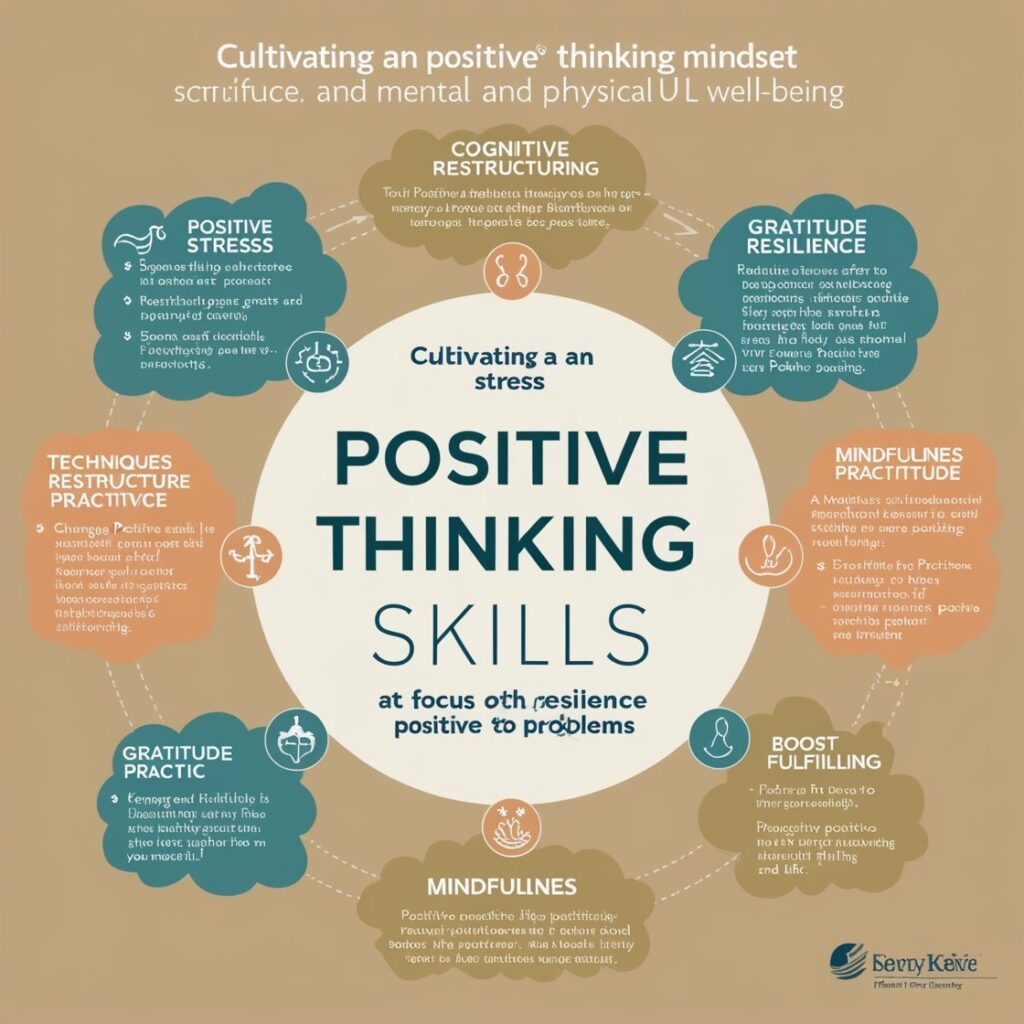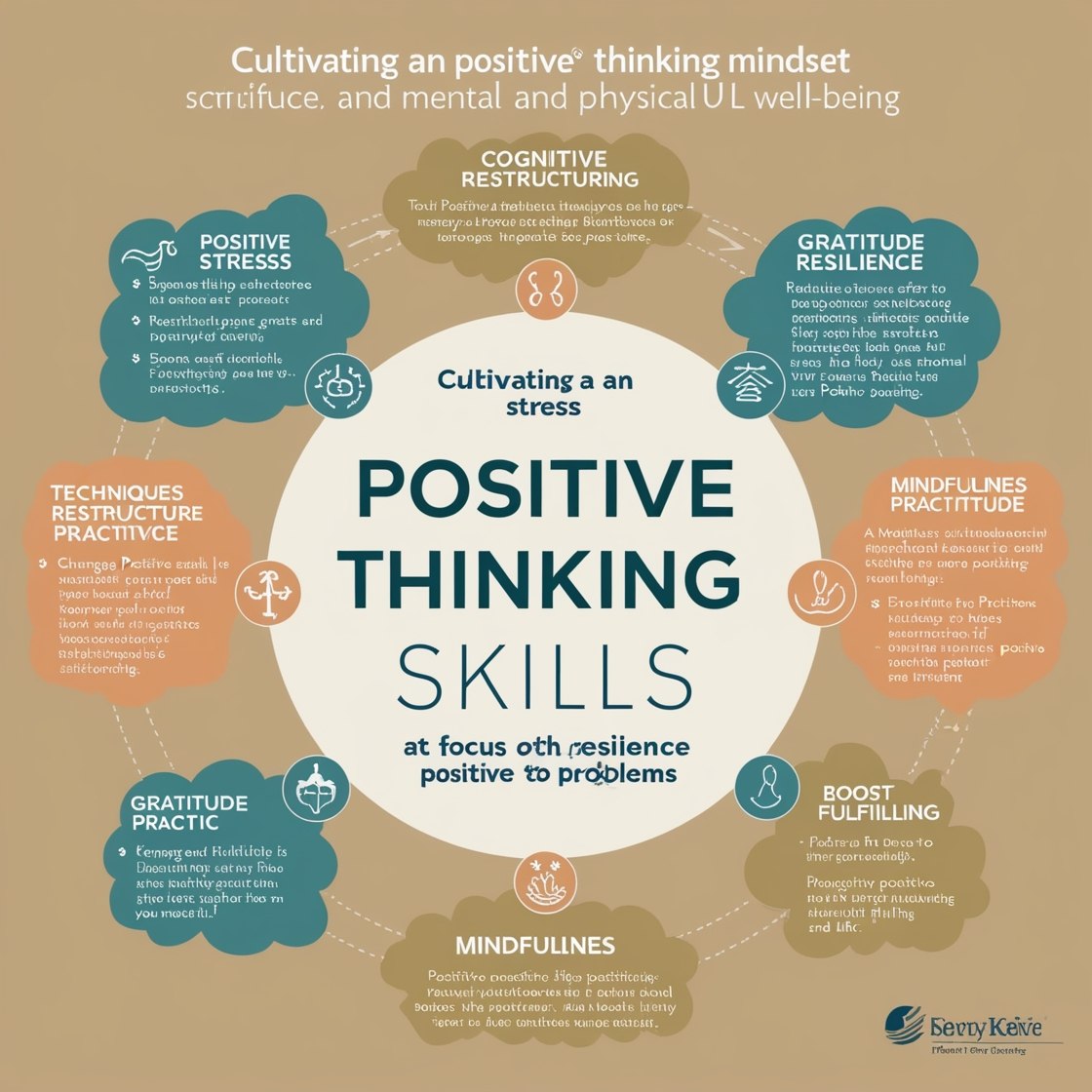Positive thinking is more than a temporary mood or a fleeting emotion. It is a cognitive habit that shapes how we view the world, interact with others, and handle challenges. By fostering an optimistic outlook, positive thinking can significantly improve one’s mental and physical well-being. The development of positive thinking skills, therefore, is essential for individuals aiming to lead productive and fulfilling lives. This article delves into the concept of positive thinking, its benefits, and strategies to cultivate it, backed by scientific research.
Understanding Positive Thinking
Positive thinking is an emotional and mental attitude that focuses on the bright side of life and expects positive results. It’s a conscious practice that affects how individuals interpret their environment and respond to daily situations. Rather than ignoring or denying life’s challenges, positive thinkers approach adversity with a mindset that sees opportunities for learning and growth. This mindset stems from optimism, a psychological quality where individuals expect good things to happen rather than bad ones.
It’s crucial to distinguish between positive thinking and naïve optimism. While positive thinking involves a realistic appraisal of situations and challenges, naïve optimism may involve overlooking potential risks or consequences. True positive thinking equips individuals with resilience, creativity, and the ability to confront problems proactively.
The Benefits of Positive Thinking
The positive thinking mindset has been linked to numerous psychological, physical, and social benefits. Below are key areas in which positive thinking can enhance an individual’s life.
- Improved Mental Health Positive thinking has a profound impact on mental health, particularly in reducing symptoms of anxiety and depression. According to research, individuals who maintain an optimistic attitude tend to report higher levels of life satisfaction and emotional well-being. Positive thinking encourages cognitive reframing—viewing negative experiences through a constructive lens, which helps reduce stress and promote resilience against setbacks.
- Enhanced Physical Health The mind-body connection plays a significant role in health outcomes. Studies show that individuals who consistently think positively are less likely to suffer from cardiovascular diseases, have lower blood pressure, and experience improved immune function. For instance, a study by the Mayo Clinic found that optimistic individuals have a significantly lower risk of dying from serious conditions such as heart disease and cancer.
- Better Stress Management One of the most significant benefits of positive thinking is the ability to manage stress more effectively. Positive thinkers are more likely to view stressors as challenges rather than threats, helping them remain calm and composed in difficult situations. This optimistic appraisal can prevent the negative effects of chronic stress, such as burnout, fatigue, and mental exhaustion. Positive thinking also promotes adaptive coping strategies, such as problem-solving and seeking support, over maladaptive strategies like avoidance or denial.
- Improved Relationships and Social Connections Positive thinking fosters better relationships because optimists tend to approach social interactions with openness, empathy, and kindness. They are more likely to seek out and maintain healthy connections, resolve conflicts constructively, and provide support to others. As a result, positive thinkers often experience higher levels of social support and satisfaction in their personal and professional relationships.
- Increased Productivity and Success A positive outlook leads to enhanced motivation and productivity. Positive thinkers are more likely to take initiative, set goals, and persist in achieving them. Their optimism drives them to see opportunities rather than barriers, leading to innovative solutions and a greater sense of accomplishment. Research suggests that positive thinkers also exhibit higher levels of self-confidence, which in turn improves performance in educational, professional, and personal settings.

Techniques for Developing Positive Thinking Skills
Although some individuals may naturally lean toward optimism, positive thinking is a skill that can be cultivated with practice and dedication. Below are several evidence-based techniques to develop a positive mindset.
- Cognitive Restructuring Cognitive restructuring, a key element of cognitive-behavioral therapy (CBT), involves identifying and challenging negative or irrational thoughts and replacing them with more positive, realistic ones. For example, if an individual tends to think, “I’ll never succeed,” they can restructure this thought to “Success takes time, and I’m learning every step of the way.” This process helps individuals shift their mindset from self-defeat to self-improvement.
- Mindfulness and Meditation Mindfulness practices, such as meditation and deep breathing exercises, encourage individuals to stay present and focus on their thoughts and emotions without judgment. Regular mindfulness practice can help individuals become more aware of negative thought patterns, enabling them to let go of unproductive thinking and cultivate a more optimistic outlook.
- Gratitude Practice Gratitude is a powerful tool for fostering positive thinking. By consciously reflecting on the things they are grateful for each day, individuals can shift their focus from what is lacking to what they already have. Research has shown that gratitude practices can improve mood, reduce stress, and enhance overall life satisfaction. Keeping a gratitude journal, for instance, can be a daily reminder of positivity in one’s life.
- Visualization and Positive Affirmations Visualization involves mentally rehearsing positive outcomes, while affirmations are positive statements individuals repeat to reinforce their self-belief. Both techniques are commonly used in performance psychology to boost self-confidence and motivation. For example, an individual preparing for a presentation may visualize themselves delivering it successfully and repeat affirmations like, “I am capable and well-prepared.” These practices help create a sense of preparedness and reduce performance anxiety.
- Surrounding Yourself with Positivity The people individuals surround themselves with can significantly impact their mindset. Positive social environments reinforce constructive thinking habits, while negative ones may contribute to doubt and pessimism. By building supportive relationships and spending time with encouraging, uplifting people, individuals can enhance their ability to think positively.
- Reframing Setbacks as Learning Opportunities Setbacks and failures are inevitable, but how individuals respond to them determines their future success. Positive thinkers view setbacks as opportunities for growth rather than as confirmation of inadequacy. Reframing failures as valuable lessons helps individuals maintain optimism and resilience in the face of challenges.
- Physical Exercise Regular physical activity is not only beneficial for the body but also for the mind. Exercise releases endorphins, the body’s “feel-good” chemicals, which promote a sense of well-being and reduce symptoms of depression and anxiety. Engaging in regular exercise can help individuals stay physically healthy while also cultivating a positive mindset.
The Science Behind Positive Thinking
Research in psychology and neuroscience supports the many benefits of positive thinking. One prominent theory is the “Broaden-and-Build” theory of positive emotions, proposed by psychologist Barbara Fredrickson. According to this theory, positive emotions broaden an individual’s thought-action repertoire, encouraging them to explore new ideas and take creative approaches to problem-solving. Over time, this broadened perspective builds personal resources, such as social support, knowledge, and resilience, which contribute to long-term success and well-being.
Neurologically, positive thinking affects the brain by activating regions associated with reward and motivation, particularly the prefrontal cortex. Brain scans of optimistic individuals show increased activity in these areas, suggesting that optimism may create a self-reinforcing cycle where positive thoughts lead to positive emotions and behavior, which in turn strengthens optimism.
Challenges to Cultivating Positive Thinking
While the benefits of positive thinking are well-documented, it can be challenging to maintain an optimistic mindset, especially in the face of adversity. Several factors can hinder the development of positive thinking skills:
- Negativity Bias The human brain has a natural tendency to focus more on negative experiences than positive ones. This evolutionary trait, known as negativity bias, served as a survival mechanism but can make it difficult to maintain positivity in modern life. Overcoming negativity bias requires conscious effort and practice.
- Chronic Stress and Trauma Individuals dealing with chronic stress or trauma may find it particularly difficult to think positively. Persistent exposure to stress can alter brain chemistry, making it harder for individuals to experience positive emotions. For these individuals, professional support from therapists or counselors may be necessary to address underlying issues and rebuild positivity.
- External Influences Cultural and societal factors can also play a role in shaping one’s mindset. Living in an environment where pessimism or criticism is prevalent can make it more challenging to develop positive thinking skills. In such cases, individuals need to take deliberate steps to counterbalance these influences with positive habits and relationships.
Conclusion
Positive thinking is a powerful skill that can enhance every aspect of an individual’s life, from mental and physical health to relationships and productivity. Though some people may be naturally inclined toward optimism, anyone can develop positive thinking skills through mindfulness, gratitude practices, cognitive restructuring, and other techniques. By embracing positivity, individuals can improve their well-being, build resilience, and unlock their full potential.
References:
- Mayo Clinic. (2019). “Positive thinking: Stop negative self-talk to reduce stress.”
- Fredrickson, B. L. (2001). “The role of positive emotions in positive psychology: The broaden-and-build theory of positive emotions.” American Psychologist.
- Carver, C. S., & Scheier, M. F. (2014). “Dispositional optimism.” Trends in Cognitive Sciences.
- Seligman, M. E. P. (2011). “Flourish: A visionary new understanding of happiness and well-being.”


2 thoughts on “Positive Thinking Skills”
Comments are closed.